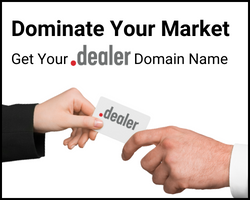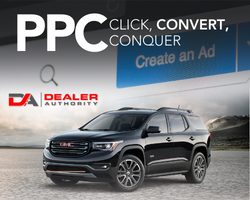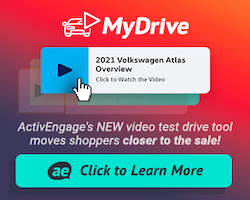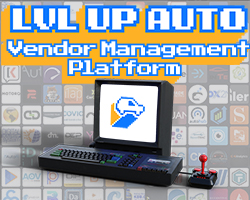[highlight color=”#F0F0F0″ font=”black”]This is part 2 in a 4 part series about automotive social media strategies that are emerging to help car dealers get true benefit. It’s not just about branding. It’s not about auto-feeding marketing content. With the right strategies in a place, dealers can drive foot traffic and website visitors in a way that can help them sell more vehicles and drive more service customers.[/highlight]
Your Social Media is Rocking. Now What?
By now, you’ve completed stage 1 and 2, localizing your fan base and getting the algorithms to like you. If you haven’t done that yet, refer back to part 1 of this series, The Three Stages of Social Media. Social media is a tool that can drive business to your dealership, but you have to get your presence in order before taking the next steps.
Once you have your presence rocking, it’s time to put your social media to work. You’re getting interactions with your posts, People are liking, commenting on, and sharing what you’re putting up on your Facebook page. You’re getting some good play on Google+, Twitter, and Pinterest. You’re doing everything well except you are only hearing of anecdotal instances when actual buyers mention that they follow you on social media. This is where Stage 3 comes into play.
Stage 1 and 2 were first and second gear. Stage 3, which is the art of using social media to drive verifiable and steady business to your dealership, is actually comprised of three more gears. Here, we’re going to be talking about the easiest and most cost-effective way to drive that business. In the next two articles in this series, we will be talking about the other two ways that you can use social media for driving business. In this article, we’re going to cover news feed business posts.
Before we do that, it’s important that you understand two important mentalities surrounding social media in hopes of erasing any misconceptions.
Understanding WHY Social Media Works to Drive Business
One common misconception is that social media is in the same marketing group as both search engine optimization and reputation management. There are definitely connections between social media and these other two disciplines. Social media can have a dramatic effect on search engine rankings while reputation management involves sites that are directly entangled with social media. Review sites are social by nature, but that doesn’t mean that the same types of strategies apply.
Both search engine optimization and reputation management are passive marketing practices. That sounds worse than it is. By passive, I mean that buyers need to be the active participant. You cannot go after consumers through SEO or RepMan. They need to be in the market searching for a car in order to find your organic listings or reviews.
Social media is proactive. You are taking the buying message to them on their turf (their Facebook news feed, their Twitter stream, etc). They may be in the market for a car today. They may not be. Either way, planting that seed before or during their buying process can be easily done through social media. The same holds true for service; some clients have seen that it’s more powerful for driving service business than sales. They may not be thinking about getting their brakes replaced today but if your brake special pops up, it may prompt them to recall that they did hear their brakes squeal embarrassingly as they were picking up their kids from school.
The other misconception is that the mentality behind advertising on social media is like PPC or classified advertising. The reality is that the closest cousin to social media advertising is actually television. People don’t think to themselves, “I need to buy a car soon. Let’s turn on the television and hope we see an ad,” but for many dealers television advertising has a dramatic effect on their overall business.
The same holds true for social media advertising. People don’t go to Facebook to see your ads just as they don’t turn on the television to see commercials. They do, however, expect both to be part of the price they pay to get entertained. In both cases, they’re visiting Facebook or watching television to enjoy themselves. The ads that are part of the equation may be a nuisance to them but they have been accepted. More importantly, they work.
Some say that social media advertising is like “TV-lite” because the cost is so much lower, but the reality is that the number of local people reached per dollar spent on social media is much higher than television. You can spend $10,000 in television advertising to reach 100,000 locals or you can reach $1,000 in Facebook advertising to reach 50,000 locals. The math is pretty easy.
3rd Gear: Mixing in the Business Message
If a network television channel played only television shows with no commercials, they’d quickly be out of business. Conversely, if a television channel played nothing but ads, they wouldn’t get any viewers. Having the proper mix of entertainment, education, localization, and business messages is the key to running a proper television channel as well as an effective social media presence.
For this exercise, let’s talk exclusively about Facebook. The strategies that apply to the other social networks are easier and less time-consuming but they’re also less effective than Facebook.
First, you must find the appropriate voice. I would happily debate anyone who believes that there needs to be irrelevant content on their Facebook page. Between automotive content, customer stories, employee stories, and community interest posts, there’s simply no reason to post pictures from 9gag. You may decide that you want to be the automotive hub for your local community with images and videos highlighting cars new and old as well as industry news presented with a localized spin. Your voice may be one centered around community events and charitable support, using your reach to spread positive messages from organizations outside of the dealership. You could make your voice reflect the humanity of the dealership, highlighting the stories that surround both customers, employees, and local “stars” (a little league sports team, for example).
A combination of these and other ideas can work very nicely as well. Diverse or focused, you need to pick a voice that you can effectively communicate.
Once your voice is established, it’s time to work in the “brief commercial breaks”. This is the tricky part but it can be extremely effective when done right. The idea is to present a variety of business messages that you work into the mix. It could be once a week, once every four posts, or at whatever frequency works best for your dealership’s goals. Don’t overdo it as these messages can turn people off, but don’t be the television network without enough commercials, either.
There are two things you need to remember when crafting your business-driving messages. First, you have to make it social. If you’re posting a spotlight vehicle, for example, don’t say, “Check out this week’s manager’s special [link].” Tell a story. Make it social. Find a vehicle that you can communicate about in a post with a good story behind it. Highlight the things that make it special or worthwhile, then go into the details about buying the vehicle itself.
The second thing to remember is to make it as trackable as possible without letting the tracking get in the way of the effectiveness. I covered this a bit on my blog post, “Trackable vs Verifiable: The Social Media Conundrum“. For example, if you’re posting a used vehicle special that links to the vehicle detail page, either be sure that you website vendor’s analytics can distinguish between standard traffic to the page and traffic that came from your post, or add a marker at the end. Putting a question mark followed by the word “Facebook” at the end of the VDP’s URL is normally enough to give it distinction without taking away from the intent.
With that understood, I’ve put together a few examples of business-driving posts that you can play with. The important part is to use these as a guide and come up with your own as well. There are hundreds of ways to skin this particular cat. Find the ones that work best for you.
- Individual Vehicle Specials – If you think that your inventory tab on your Facebook page is enough to drive business, you’re incorrect. Just as with television ads where a handful or even a single car is used to represent the inventory, so too does it work on Facebook. Link to the VDP or special page. Tell a story! Again, and I cannot stress this enough, make sure that you’re telling something compelling about the vehicle. What you post doesn’t just represent that individual car. It tells of the care that your dealership puts into understanding each individual vehicle. That particular car might not match their needs but if the way that it’s presented is compelling enough, they’ll still click through and look at other inventory items.
- Service Offers – This is the only example that is harder because of space limitations. When you run a Facebook Offer, you have to be very concise with your wording. Make it original, catchy, Facebook-exclusive (very important!), and limited. It doesn’t cost any more to run 1000 offers than to run 50, but you don’t want to run too many. In this case, you’re playing the exclusivity card so if you have a limited number, people will take it all more seriously. $14.99 oil changes, for example, can be a great way to get people into the service drive. What they spend from there on other services… well, that’s really up to your service adviser.
- OEM Offer Enhancement – It doesn’t get any trickier than this one, but it can also be the most rewarding as a single post can drive multiple showroom visits. This is where you play off the the offers that the OEM is already populating on television and enhance them to make your dealership stand out as “the” dealer to go to for this offer. One clever technique that I saw was a “double down” of a particular rebate. Obviously, this can only be done on certain offers where there’s enough room to make it work and certain OEMs are very strict about that sort of wording, but even if you’re just reiterating the message that they hear on television or other OEM advertising, you’ll be able to take a larger piece of the pie.
There are plenty of ways that you can get your appropriate business driving message out there. The key to all of these is through Facebook advertising. There are those who use post “Boosting” often – I’m not a big fan of it. Individualized ads promoted properly through Power Editor is the way to go (sorry, that’s a whole other blog post).
In the next two parts of this series, we will go over the other two ways that social media can drive business: using Facebook buyer-intent data as well as your own custom audience data and utilizing your own dealership’s team. Until then, please feel free to comment here or contact me directly if you have any questions.









